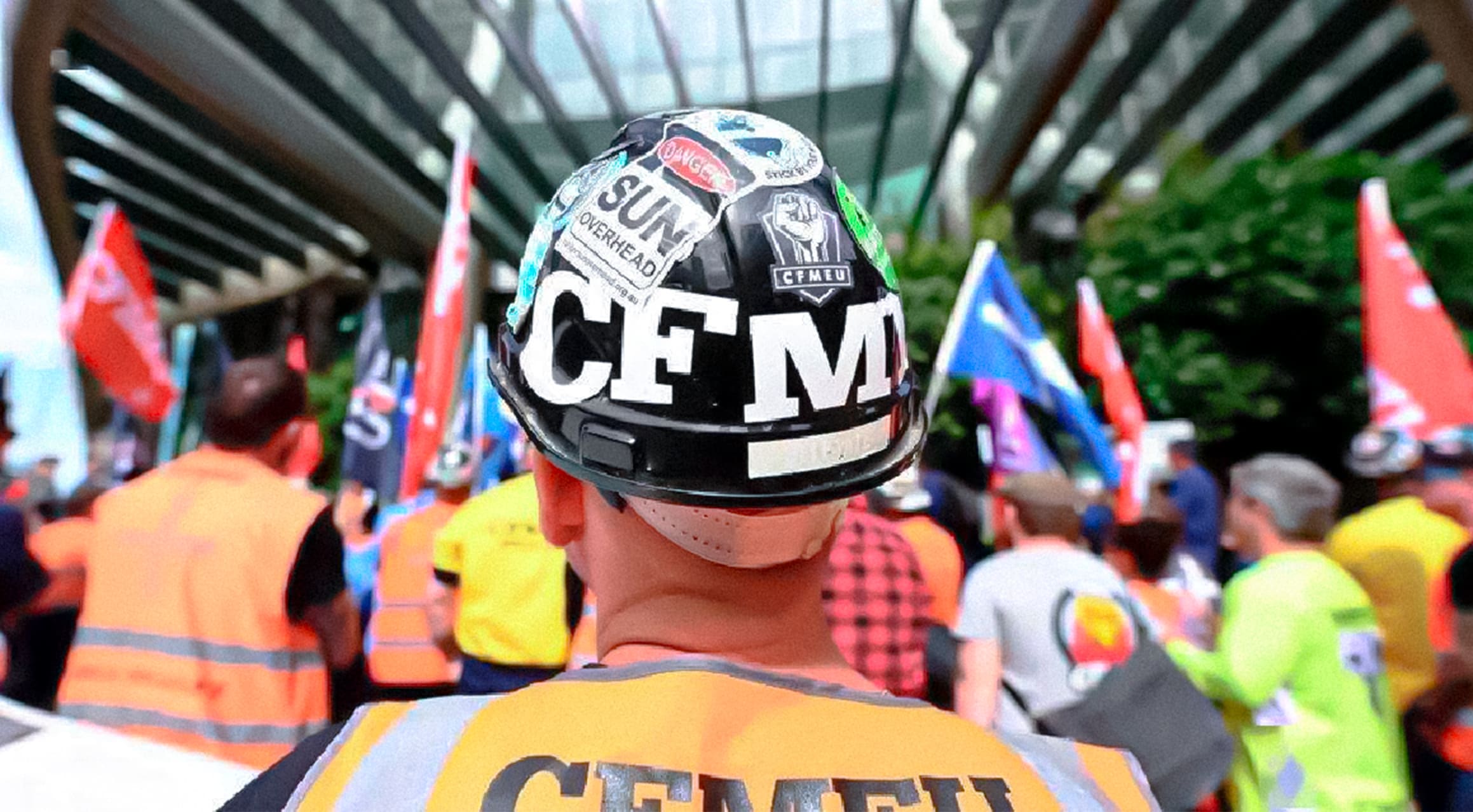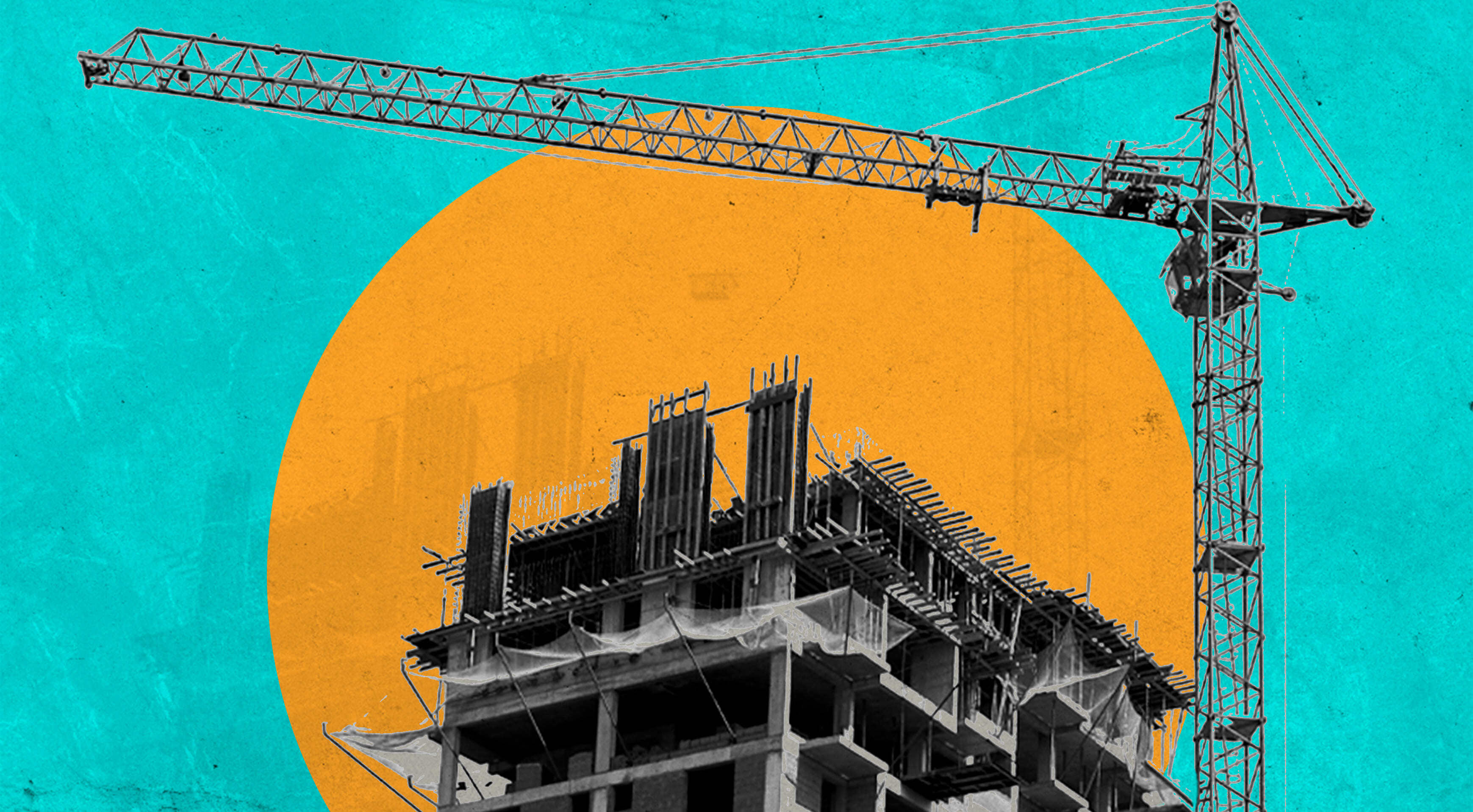Features > Property News & Insights > In-Depth Analyses
Low building activity & union tensions threaten the 1.2 million housing target

Image from SOHU.com
KEY POINTS
- ABS figures for the March quarter of 2024 show home completions were at their second lowest level in 10 years
- Work began on just 158,798 new homes across Australia over the year to March 2024, the weakest 12-month period for new home starts since 2012
- Homes need to be constructed at an average of 60,000 a quarter or 240,000 per year to meet the ambitious National Housing Accord target of 1.2 million new homes by 30th June 2029
- Analysts say strong wage bargaining outcomes by the controversial CFMEU union on major infrastructure sites have helped to force up labour costs in the residential construction sector
New data from the Australian Bureau of Statistics (ABS) has raised more questions about the Federal government’s ambitious target of building 1.2 million homes over the next five years.
The ABS’ latest Building Activity release provides quarterly estimates of the number of dwellings commenced, completed, currently under construction and in the pipeline, bringing together a number of monthly figures into a comprehensive dataset.
The statistics underline just how much faster the industry needs to commence and complete homes if the National Housing Accord target is to be met.
While it is also not involved in most dwelling construction in Australia, the knock-on effects in the building industry from the activities of the controversial and powerful Construction, Forestry and Maritime Employees Union (CFMEU) is also making the home-building target harder to achieve.
New homes actually completed
The ABS figures show that in seasonally adjusted terms, just 41,329 homes were completed in Australia in the three months to the end of March 2024.
That’s a fall of 9.5% on the previous quarter and 8.1% lower than completions in the corresponding three months of 2023.
It’s also the second lowest quarter of housing completions in the last ten years.
To reach the National Housing Accord target of 1.2 million new homes by June 30th 2029, Australia’s building industry needs to complete an average of 60,000 homes each quarter over the next five years.
Describing the completion figures as casting “a dark cloud” over the nationally agreed target, the Property Council of Australia’s Head of Policy and Advocacy, Matthew Kandelaars, says the “figures reveal the extent of the challenge and just how much we need to lift our game to hit our targets.
“If housing supply stays this low, we will only manage to build around 830,000 homes over the next five years, leaving us a whopping 370,000 short.
“If we don’t start increasing the pace, we will miss what should be an achievable target by a country mile.
“Governments across the country need to utilise every possible measure to assist the industry deliver the supply of new homes we so desperately need.”
New home commencements
According to the Bureau of Statistics, total dwelling commencements rose slightly by 0.5% to 39,715 dwellings during the March quarter of 2024, with work on new houses rising 4.8% to 25,072 dwellings.
Shane Garrett, the chief economist at Master Builders Australia, says the increase—however small—is welcome, but he warned Australia is still well off the pace required to build 1.2 million new homes over five years.
“The increase was driven by a 4.6% expansion in new detached house commencements, however, higher density dwelling starts sank by 5.5%,” he says.
It’s those higher density dwellings like apartments and townhouses located in urban areas, close to existing amenities and public transport, that the federal and state government say are the key to meeting the National Housing Accord targets.
“Work began on just 158,798 new homes across Australia over the year to March 2024, the weakest 12-month period for new home starts since 2012,” Shane Garrett says.
Master Builders CEO Denita Wawn says Australian builders “are willing and able to build new homes, but they are being held back by worker shortages, restrictive and costly union pattern EBAs (Enterprise Bargaining Agreements), slow building approvals, and high taxes.
“We need governments to take a holistic approach to the housing crisis and make reforms across portfolios to put us on the right track.”
The long arm of the CFMEU
Master Builders and the Property Council have also been vocal in their condemnation of the CFMEU.
The construction arm of the powerful union has become engulfed in scandal after allegations it has been infiltrated by underworld figures and bikie gangs and has been holding many big building firms to ransom with standover tactics and intimidation.
While CFMEU members largely work on heavily unionised worksites, constructing big government infrastructure projects or skyscrapers, there’s plenty of evidence their influence is being felt by smaller building firms working in residential construction.
ABC Business correspondent Daniel Ziffer says the CFMEU’s success at negotiating “substantial pay packets” for even junior workers has had flow-on effects across the entire construction industry, where competition for labour is high, because of a shortage of skilled workers.
“After decades of under-investment, Victoria, New South Wales and future Olympics host Queensland have gone on a taxpayer-funded infrastructure binge that has super-charged the construction sector,” he says.
“That's soaked up a lot of workers.”
“Many tradespeople have been lured to jobs subject to well-paying CFMEU agreements, where the scope of projects runs in years and even decades.”
Phil Dwyer is the national president of the Builders Collective of Australia, which represents small builders.
"So we've lost a huge amount of good tradespeople, and it's certainly created a shortage of tradespeople in domestic areas," he told the ABC.
"Most certainly trades have (since) escalated in price because with the shortages it's, 'No, I can't do it', 'I can do it if you pay me X dollars' or 'This is my price'."
That increased cost pressure for labour has forced up the cost of building homes in Australia and indirectly, helped send more small struggling building firms to the wall.
It’s actually helped to shrink the size of the residential building industry and limit the availability of skilled tradespeople at precisely the time when we need more builders, not less, to deal with a housing shortage and a rapidly growing population.
Stay Up to Date
with the Latest Australian Property News, Insights & Education.




.png?width=292&height=292&name=Copy%20Link%20(1).png)
 SIGN UP FOR FREE NEWSLETTER
SIGN UP FOR FREE NEWSLETTER
%20(1).png)







.jpg?width=1920&height=1080&name=Warning%2c%20You%20Might%20Be%20Facing%20Higher%20Taxes%20Soon%20(1).jpg)





.png?width=1920&height=1080&name=Rate%20Drops%20Signal%20BIGGEST%20Property%20Boom%20in%20DECADES%20(1).png)

.jpg?width=1920&height=1080&name=Labor%20vs%20Liberal%20These%20Housing%20Policies%20Could%20Change%20the%20Property%20Market%20Forever%20(1).jpg)
.jpg?width=1920&height=1080&name=QLD%20Slashes%20Stamp%20Duty%20Big%20News%20for%20Investors%20%26%20Home%20Buyers%20(1).jpg)
.jpg?width=1920&height=1080&name=Trump%20Just%20Slapped%20Tariffs%20%E2%80%93%20Here%E2%80%99s%20What%20It%20Means%20for%20Australia%20(1).jpg)
.jpg?width=1920&height=1080&name=Federal%20Budget%202025%20More%20Debt%2c%20No%20Housing%20%E2%80%93%20Here%E2%80%99s%20What%20You%20Need%20to%20Know%20(1).jpg)
.jpg?width=1920&height=1080&name=Australias%20Housing%20Crisis%20is%20about%20to%20get%20MUCH%20Worse%20(New%20Data%20Warns).jpg)
%20(1).jpg?width=1920&height=1080&name=Australias%20RENTAL%20CRISIS%20Hits%20ROCK%20BOTTOM!%20(2025%20Update)%20(1).jpg)
%20(1).png?width=1920&height=1080&name=Is%20Adelaide%20Still%20a%20Good%20Property%20Investment%20(2025%20UPDATE)%20(1).png)
.jpg?width=1920&height=1080&name=RBA%20Shocks%20with%20Rate%20Cuts!%20What%E2%80%99s%20Next%20for%20Property%20Investors%20(1).jpg)
%20(1).jpg?width=1920&height=1080&name=I%20Predict%20The%20Feb%20Rate%20Cut%20(My%20Price%20Growth%20Prediction)%20(1).jpg)
.png?width=1920&height=1080&name=Why%20Property%20Prices%20Will%20Rise%20in%202025%20Market%20Predictions%20(1).png)
.jpg?width=1920&height=1080&name=Why%20Investors%20Are%20Choosing%20Apartments%20Over%20Houses%202%20(1).jpg)
.jpg?width=1920&height=1080&name=Why%20Rate%20Cuts%20Will%20Trigger%20A%20Property%20Boom%20(1).jpg)
.jpg?width=1920&height=1080&name=Retire%20On%202Million%20With%20One%20Property%20(Using%20SMSF).jpg)
.jpg?width=1920&height=1080&name=4%20Reasons%20Why%20You%20Should%20Invest%20in%20Melbourne%20Now%20(1).jpg)
%20(1).jpg?width=1920&height=1080&name=Old%20Property%20vs%20New%20Property%20(Facts%20and%20Figures%20Revealed)%20(1).jpg)
%20(1).jpg?width=1920&height=1080&name=Will%20The%20New%20QLD%20Govt%20Create%20a%20Property%20Boom%20or%20Bust%20(My%20Prediction)%20(1).jpg)
%20Scott%20Kuru%20(1).jpg?width=1920&height=1080&name=Inflation%20Hits%20Three-Year%20Low%20(Will%20RBA%20Cut%20Rates%20Soon)%20Scott%20Kuru%20(1).jpg)
.jpg?width=1920&height=1080&name=How%20to%20Buy%20Investment%20Property%20Through%20SMSF_%20The%20Ultimate%20Guide%20(1).jpg)
.jpg?width=1920&height=1080&name=Victoria%20Slashes%20Stamp%20Duty%20Melbourne%20Set%20to%20Boom%20Scott%20Kuru%20(1).jpg)
.png?width=1571&height=861&name=Are%20Foreign%20Buyers%20Really%20Driving%20Up%20Australian%20Property%20Prices%20(1).png)
.jpg?width=1920&height=1080&name=The%20Single%20Factor%20That%20Predicts%20Property%20Growth%20Regions%20(1).jpg)
%20Scott%20Kuru%20(1).jpg?width=1920&height=1080&name=My%20Prediction%20On%20Rates%20%26%20Negative%20Gearing%20(Market%20Crash)%20Scott%20Kuru%20(1).jpg)

-1.png?width=1920&height=1080&name=Major%20Banks%20Cut%20Rates%20Will%20RBA%20Follow%20Suit%20(Sept%20Rate%20Update)-1.png)
%20Scott%20Kuru-1.png?width=1920&height=1080&name=Rate%20Cut%20Coming%20What%20New%20Zealands%20Move%20Means%20for%20Australia%20(Sept%20Prediction)%20Scott%20Kuru-1.png)
%20(1).jpg?width=1920&height=1080&name=Buy%20when%20the%20interest%20rates%20are%20high!%20(Why%20you%20must%20buy%20now!)%20(1).jpg)
.jpg?width=1920&height=1080&name=Carms_Revised%20Taxes%20Due%20Aug%209%20YT%20Thumbnail02%20(1).jpg)
.jpg?width=1920&height=1080&name=Carms_Too%20Little%20Too%20Late%20Aug%207%20YT%20Thumbnail01%20(1).jpg)









.jpg?width=1920&height=1080&name=Carms_Rate%20Drop%20In%20July%20Jun%2010%20YT%20Thumbnail02%20(1).jpg)
.jpg?width=1920&height=1080&name=Carms_Own%20a%20Property%20V6%20Jun%205_YT%20Thumbnail%20(1).jpg)









.png?width=1920&height=1080&name=Artboard%201%20(3).png)






.jpg?width=1920&height=1080&name=YT%20thumbnail%20%20(1).jpg)

